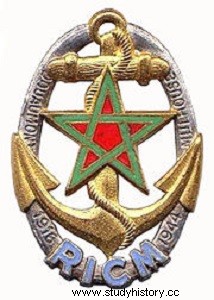
The Marine Tank Infantry Regiment (RICM) is a regiment French tank, heir to the colonial infantry regiment of Morocco.
Created in June 1915, then named thus in December 1958, by the change of name of the colonial infantry regiment of Morocco, it is part of the weapon of the navy troops and is specialized in light armored cavalry. The RICM is the most decorated regiment of the French army. It belongs to the 9th Light Armored Marine Brigade (9th BLBMa). Since July 1996, he has been based in Poitiers at the Quartier Ladmirault.
Creation and different denominations
August 1914, creation of the 1st Mixed Colonial Infantry Regiment,
In December 1914, it became the 1st Colonial Infantry Marching Regiment,
June 9, 1915 , creation of the Colonial Infantry Regiment of Morocco,
In May 1956, by change of name, it became the Marine Tank Infantry Regiment.
History of RICM garrisons, fights and battles
First World War
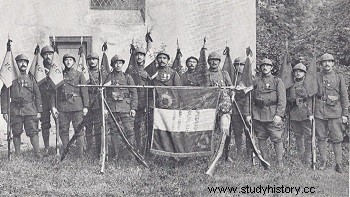
As a young regiment, it was born in Rabat, Morocco at the beginning of August 1914 under the name of 1st mixed regiment of colonial infantry. In December, it becomes the 1st colonial infantry marching regiment. On August 17, 1914, he disembarked, then was immediately engaged on the French front at the very beginning of the First World War. The RICM, colonial infantry regiment of Morocco, was officially created on June 9, 1915. As pointed out by Gaston Gras, a former soldier of this regiment, the colonial infantry regiment of Morocco was composed mainly of French people from all regions of Metropolitan France, Gaston Gras speaks of Normans, Bretons, Parisians, Basques and Auvergnats, etc. The colonial infantry regiment of Morocco is therefore not a regiment of skirmishers. It is a regiment of the colonial infantry, therefore in this case of the French marine infantry. It is in his work entitled "the recovery of Douaumont" that Gaston Gras evokes the composition of his regiment. However, Gaston Gras indicates that for certain missions Senegalese or Somali auxiliaries were attached to it.
For four years, the regiment fights which will make its emblem the most decorated of the French army with 10 citations at the order of the army.
In October 1916, reinforced by Senegalese and Somali Tirailleurs, the RICM seized Fort Douaumont. For this feat of arms, he obtained the Legion of Honor and his third citation at the order of the army:
“On October 24, 1916, reinforced by the 43rd Senegalese battalion and two companies of Somalis, captured with admirable momentum the first German trenches; then advanced under the energetic command of Colonel Régnier, successively breaking the enemy's resistance to a depth of two kilometers. Inscribed a glorious page in its history by seizing an irresistible momentum from Fort Douaumont, and maintaining its conquest despite the enemy's repeated counter-attacks. »
During the Great War the RICM will have lost 15,000 porpoises (killed or wounded) including 257 officers. Its flag will carry no less than 10 palms on the 14-18 war cross, the Legion of Honor (for a fact similar to the taking of an emblem of high struggle from the enemy who will be the conquest of the fort of Douaumont on October 24, 1916), the military medal (on July 5, 1919), the Order of the Tower and the Sword.
The regiment will be stationed in the Rhineland from 1918 to 1925 before joining Morocco.
Between the wars
He was sent to Morocco, first in the Rif between 1925 and 1926, then from 1927 to 1932 in operation in the south of the country. During these two years, 94 porpoises (including 8 officers) fell, 275 were injured (including 7 officers) and 10 disappeared.
It was during this period that the Sultan awarded the Cherifian Cross of Military Merit to the flag.
The 3rd battalion and the franc group of the RICM will be decorated with the T.O.E. (external operations theater) by order of the army.
World War II
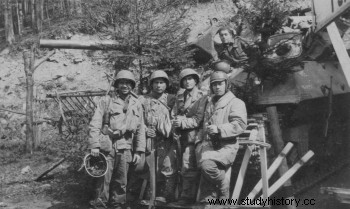
In Charente on June 23, 1940, the RICM was still fighting in The Hague -Descartes on June 24. Commanded by Colonel Avre, the regiment had been fighting for ten days and had lost many men when it found itself near Civray south of the Esvre, a small tributary of the Creuse. Two small detachments, commanded by Lieutenant Stevenson, signals officer, and Captain Alfred Loudes (Saint-Cyr promotion Bayard), assistant to the colonel, maneuvered to defend the command post and succeeded in seizing several enemy machines. These fights cost him 600 killed, wounded or missing during the fighting at Amboise.
During the armistice period, in the free zone, the 2nd RIC was stationed in Perpignan and the 21st RIC in Fréjus, Toulon and Marseille. The RICM was reconstituted in North Africa, as well as the 43rd RIC.
Spring 1943, the 9th DIC was developed by General Blaizot and its reconnaissance regiment was the famous RICM of Rabat, when at the end of April it embarked for Corsica. It was a solid formation that was going to enter the fray. On June 17, 1944, she set off to conquer the island of Elba and this first attempt was conclusive. Two months later, it was the landing in Provence at La Nartelle, the fall of Toulon, then the regrouping in Vierzon.
The RICM is the first to reach the Rhine, the midshipman Delayen soaks the pennant of his squadron in Rosenau on November 20, 1944. At the end of November, the RICM goes up to Mulhouse. The 9th DIC seizes nearly two hundred towns or villages, covering about three hundred kilometers, annihilating five German divisions.
The liberation campaign cost the RICM 54 porpoises (including 2 officers), 143 wounded (including 6 officers).
Two citations to the order of the army come to weigh down the tie with its flag.
An American decoration, the Distinguished Unit is awarded to him with the right to permanent wear for the excellence of his behavior during the fighting in the gap of Belfort, Mulhouse, and Seppois-le-Bas.
Indochina War
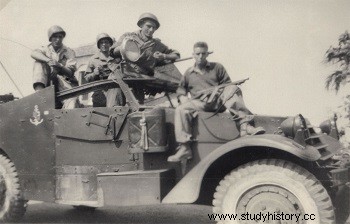
On November 4, 1945, the first elements of the regiment arrived in Saigon. On November 6, the regiment suffered its first loss on Indochinese territory.
The RICM will be involved in almost all operations:Operation Gaur (1946), control operations in Cochinchina and South Annam (1946 to 1947), Cambodia (1946 to 1947), Tonkin (1946 to 1947, Operation Léa (Lang-Son , Cao-Bang, Bac-Kan), Upper region (February 1948 to February 1951), operations in the Delta (January 1948 to February 1951), Tonkin (1952-1954), Dien Bien Phû (for the 2nd platoon of the 1st squadron) and will lead the last battles until July 1954.
The armored unit of Tonkin will also be decorated with the order of the army just like the 1st, the 4th squadron, the squadron of stars (this one will also be decorated with the order of the navy) as well as the group of marching squadrons. A citation to the order of the army corps will also honor the 2nd, 3rd, 5th (twice cited at this level), the RICM marching battalion, the RICM marching squadron group as well as the 2nd platoon of the 1st squadron. Finally the 4th squadron will also receive a citation in the order of the division.
A total of 15 citations will be awarded to RICM units during this war and 5 to the regiment.
It will have cost 1300 porpoises (including 57 officers and 167 non-commissioned officers killed or wounded).
War in Algeria
In May 1956, the Colonial Infantry Regiment of Morocco (RICM) joined Algeria. In 1958, when the Colonial Troops became "Marine Troops" again, he kept his initials in memory of his feats of arms. It then became the Marine Tank Infantry Regiment, the only TDM unit (marine troops) to fight on light armor. The 1st RIMa joined it in this specialty in 1986. The regiment's officers are trained at the Cavalry Training School in Saumur
At the end of the ceasefire in Algeria of March 19, 1962, 114 units of the local force of Algerian order were created throughout Algeria. They were made up of 10% of French soldiers from mainland France and 90% of Muslim Algerian soldiers, who during the transitional period were to be in the service of the Algerian provisional executive, until the independence of Algeria (source Archives Historiques du Department of Defense). The RICM has formed the 513th unit of the local force of the Algerian order for the transitional period. (Evian Accords)
The return to the garrison in mainland France
He was stationed in Vannes from 1963 to 1996, since September 1996 he is currently based in Poitiers.
External missions
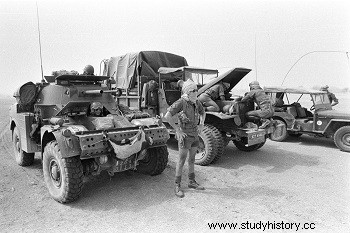
In 1978 and 1979, the RICM took part in Operation Tacaud in Chad. In April 1978 two porpoises were killed, as well as several wounded at the Battle of Salal, the first combat of this operation. In October of the same year, it is the clash of "Forchana" then on November 4 the engagement of "Katafa":four soldiers are very seriously affected. In mid-December, the Foundouck fight will see various committed personnel seriously affected. At the beginning of 1979, on March 5, it was the assault on Abéché, the rebel offensive of Ahmat Acyl failed and the column was annihilated by the French group and the FAN, a porpoise from the 1st squadron will be killed, several injured. The balance sheet is more than 400 rebels killed (800 weapons and 50 vehicles seized) by the FAN and the French group made up of the RICM and units of the 3rd Rima and 11th Rama. Subsequently, several platoons will be detached to the capital to avoid inter-ethnic clashes. During all these fights heavy losses will be inflicted on the rebel forces and a lot of equipment (weapons and vehicles) recovered or destroyed. At the same time, from March to September 1978, the 1st squadron was part of the first UNIFIL detachment within the 3rd Rpima group. During the clashes against certain Palestinian factions on May 2, 1978, a porpoise was killed and several were seriously injured. A summons to the order of the army will be awarded in October 1978 to the RICM for its commitments in Lebanon and Chad in 1978. of the Central African Republic of Emperor Bokassa, then the installation of the "Pacaud" elements leaving Chad in Bouar and Bangui. During these events the unit commanders were:(1st squadron:captain Delort, 2nd squadron:captain Clerc then captain de Zuchowicz, 3rd squadron:captain Sirot).
By decision no. 118 of October 25, 1978, the actions carried out by the regiment for the benefit of a country linked to France by cooperation agreements and for those for the benefit of the United Nations Interim Force in Lebanon are rewarded with the awarding of an 18th citation to the Order of the Army
In 1990 and 1991, he intervened in Operation Salamander and then in the active phase of the war in Kuwait.
In 1992, he provided the core of the first frenchbat (French battalion) in Sarajevo, from the reinforced RICM of the 1st company of the 2nd RIMa in the former Yugoslavia, where he lost 4 men, and distinguished himself in particular during the bridge fight from Vrbanja to Sarajevo, May 27, 1995.
In 1994, he was engaged in Operation Turquoise in Rwanda.
In 2004, the RICM took the lead of the Interarms Tactical Group No1 of Operation Licorne in Côte d'Ivoire. On November 6, a bombardment carried out by the Ivorian air force on the Descartes high school in Bouaké killed nine French soldiers and an American civilian who had taken refuge on this site occupied by the group's Combat Train Ne2. Five RICM porpoises were killed (Chief Warrant Officer Barathieu, Chief Warrant Officer Capdeville, Staff Sergeant Delon, Sergeant Derambure, Corporal Decuypère) and around thirty others wounded.
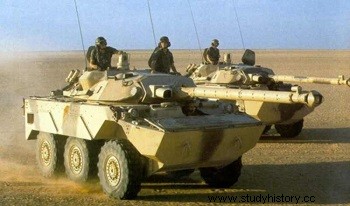
Traditions
In the name of God, long live the colonial. Porpoises and bigors have God himself as their patron saint. At the origin of this expression, Charles de Foucauld, missionary, who, one day when he was in difficulty with an indigenous population, saw colonial units come to his aid. He exclaimed happily “In the name of God, long live the colonial! », relieved to see his saviors. The celebration of the weapon of the navy troops takes place on August 31 and September 1, anniversary of the battle of Bazeilles (blue division). August 31 is the occasion of the gathering of all the units in Fréjus where we find the Museum of the marine troops. On September 1, the veterans' associations organize the ceremony in Bazeilles in the Ardennes.
Currency
“Recedit immortalis certamine magno”, which means in English:He returned immortal from the great battle
Decorations
The RICM is the most decorated regiment of the French army. His flag bears:
the cross of the Legion of Honor5;
the military medal;
the 1914-1918 war cross with ten palms;
the 1939-1945 war cross with two palms;
the war cross for theaters of external operations with five palms;
the military valor cross with two palms;
the Portuguese Order of the Tower and the Sword;
the Chérifien military merit;
the blue tie of the American Presidential Unit Citation.
The RICM porpoises wear:
the double fourragère in the colors of the Legion of Honor and the Croix de guerre (rewarding his ten citations to the orders of the army during the First World War), with an olive in the colors of the 1939-45 war cross (rewarding his two citations during the Second World War);
the fourragère in the colors of the military medal with olive in the colors of the TOE war cross (rewarding his five citations during external conflicts);
the American Blue badge or Distinguished Unit Citation (Presidential Unit Citation from January 10, 1957) with Rosenau inscription on the flag tie.
The RICM flag is the most decorated of all the flags of the French army. The regiment obtained its 19th citation at the orders of the army in 2012 for its actions in Côte d'Ivoire.
Leaders
Colonial Infantry Regiment of Morocco
Lieutenant-colonel Pernot:1914
Lieutenant-colonel Larroque:1914-1915
Lieutenant-colonel Régnier:1915-1917
Lieutenant -colonel Debailleul:1917-1918
Lieutenant-colonel Modat:1918-1918
Lieutenant-colonel Ozil:1919
Colonel Mouveaux :1919-1922
Colonel Duplat:1922-1924
Colonel Barbassat:1924-1927
Lieutenant-colonel de Scheidhauer:1927 -1930
Colonel de Bazelaire de Ruppierre:1930-1932
Colonel Petitjean:1932-1933
Colonel Deslaurens:1933-1935
Colonel Allut:1935-1938
Colonel Turquin:1938
Colonel Avre:1940
Colonel Panis:1940
Colonel Lupy:1940-1941
Lieutenant-Colonel Kieffer:1941-1942
Lieutenant-Colonel Magnan:1942
Lieutenant-Colonel Hebpeard:1942
Colonel Thiabaud:1942-1943
Colonel Le Puloch:1943-1945
Colonel de Brébisson:1945-1946
Battalion Commander de La Brosse:1946-1947
Major Deysson:1947
Lieutenant-Colonel Mareuge:1947-1949
Lieutenant- colonel Capber:1949-1950
Lieutenant-colonel de La Brosse:1950-1952
Battalion commander Lacour:1952
Lieutenant -colonel Maurel:1952-1954
Lieutenant-colonel Thiers:1954-1956
Lieutenant-colonel Cochet:1956
Colonel Thiers :1956-1957
Colonel Cochet :1957-1958
Marine tank infantry regiment
Colonel Deysson:1958-1959 *
Lieutenant-colonel Kerourio:1959
Lieutenant-colonel de Gouvion-Saint-Cyr:1959-1961
Lieutenant-Colonel Kerourio:1961
Lieutenant-Colonel Dercourt:1961-1963
Colonel Routier:1963-1964
Colonel Pascal:1964-1966
Colonel Duval:1966-1968
Colonel Pierre:1968-1970
Colonel Hiliquin:1970- 1972
Colonel Garen:1972-1974
Lieutenant-colonel Fouilland:1974-1976
Colonel Gibour:1976-1978
Lieutenant-colonel Leroy:1978-1980
Lieutenant-colonel Collignon:1980-1982
Colonel Lagane:1982-1984
Lieutenant-Colonel Boutin:1984-1986
Colonel Jean-Michel de Wid erspach-Thor:1986-1988 *
Colonel Henri Bentégeat:1988-1990 **
Colonel Xavier de Zuchowicz:1990-1992 *
Colonel Patrice Sartre:1992-1994
Colonel Sandahl:1994-1996
Colonel Pierre-Richard Kohn:1996-1998
Colonel Arnaud Rives:1998-2000
Colonel Dominique Artur:2000-2002
Colonel Éric Bonnemaison:2002-2004
Colonel Patrick Destremau:2004-2006
Colonel Frédéric Garnier:2006-2008
Colonel François Labuze:2008-2010
Colonel Marc Conruyt:2010-2012
Colonel Loic Mizon:2012-2014
Colonel Etienne du Peyroux:2014-
(*) Officer who later became General of the Army.
(**) Officer who later became General of the Army.
Henri Bentégeat was Chief of the Defense Staff from 2002 to 2006.
Composition
The RICM is composed of:
4 combat squadrons equipped with wheeled armor equipped with a 105 mm gun (AMX 10 RCR):
1st squadron "The phacos"
2nd squadron " The bucentaurs"
3rd squadron "Les coqs"
4th squadron "Les mustangs"
1 lighting and investigation squadron "Scouts, always, porpoises, ahead!"
1 command and logistics squadron "The Elephants"
1 reserve squadron (7th squadron "The Stars"
Materials
Vehicles
48 AMX 10 RC
32 VBL
30 VAB(armoured forward vehicles)
Armament
FA-MAS F1 - Assault rifle, caliber 5.56 mm NATO
FN Minimi - Light machine gun, caliber 5.56 mm NATO
Subordinations
The regiment is subordinate to the 9th Marine Light Armored Brigade, itself a component of the land action force.
Parking
Personalities who served in the regiment
Joost van Vollenhoven (1877-1918), as a sergeant, promoted to second lieutenant at the start of the war, then to captain at the end of the war. Was Governor of French West Africa. Since 1963, the hall of honor of the regiment has been named after Joost van Vollenhoven.
Jean-Louis Delayen
